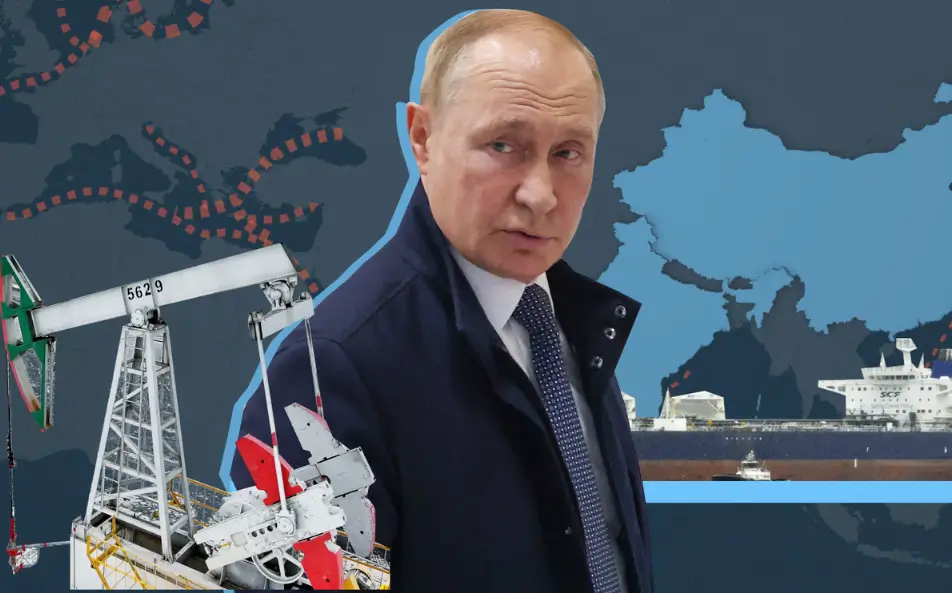US
Wed, Dec 17, 2025 | 09:30 PM IST
| Columbus | 1°C

The United Indian



The era of the big bargain-barrel may be ending. For years, Indian refiners enjoyed a kind of sweet spot: highly discounted Russian oil, ample supply and favourable margins. Now, however, the words Russian crude windfall is being replaced by “tightening supply”, “higher cost” and “margin pressure”. The shift is underway and it is uncomfortably real for India’s major refining houses.
India’s large processors including publicly-listed and private firms are scrambling. They must manage the twin challenge of rising input cost and an increasingly tough external environment. The phrase Indian Refiners cost has become central to boardroom discussions, investor briefings and policy meetings.
The first stage of the windfall era came after Western sanctions on Russia following its invasion of Ukraine. Russian crude became available in large volumes at deeply discounted rates, and Indian refiners capitalised on that opportunity. Then, new layers of complexity emerged: the U.S. and EU moved to tighten sanctions on Russian oil producers, insurers, and shipping services. These moves are now crimping the supply and discount dynamic. Industry analysts say Indian refiners are being forced into a harder game.
Obstacles now include the risk of US EU sanctions filtering into payments, insurance and logistics. Banks and shipping companies have grown wary of handling cargoes linked to sanctioned Russian firms. Some vessels face difficulty clearing ports or securing insurance; all of this adds cost, time and risk. The cheap-oil edge is fading.
Replacing Russian barrels is feasible. India still has many suppliers in the Middle East, Africa and elsewhere. But “feasible” is not the same as cheap. Many of those alternative grades cost more or involve less favourable yield profiles. That means higher fuel import cost for refiners, which in turn squeezes the margin cushion.
For refiners that had built business models around Russian barrels (because of favourable yields for diesel and jet fuel), the shift means output adjustment, storage cost changes and shipping tweaks. The term refining margin impact is now echoing in strategy sessions: if input costs climb and product pricing cannot move accordingly, profit will take a hit.
For the largest players the impact is visible. As of 2024-25, Russia accounted for about a third of India’s oil imports. Some estimates put the increase in import bill at $2-3 billion if alternative crude grades must replace Russian volumes. In short: the windfall may be ending, but the consequences will ripple across fuel prices, corporate earnings and the macro-economy.
Importantly, this is no longer only a matter of supply. Refiners must consider compliance, reputational risk, banking access, and long-term contracts. Some firms are already pausing new Russian oil orders while the regulatory environment clarifies. The phrase Russian crude windfall now carries an expiry date.
What happens when input cost rises and output pricing lags? The refining business operates on relatively thin margins compared to exploration or retail. Any sustained jump in crude cost eats into the buffer. For Indian refiners, the model that leaned on cheap Russian barrels may now require adaptation.
In practical terms: if one barrel that formerly cost a certain amount with a steep discount now costs more, even by a few dollars, the impact multiplies across millions of barrels. The shift away from discounted Russian supply shifts the margin equation. This is where Indian refiners cost becomes visible not just in board minutes but in shareholders’ eyes.
The consequences don’t stay confined inside refinery gates. Higher crude import cost feeds into finished fuel pricing. If refiners cannot absorb the entire cost rise, domestic retail prices for diesel, petrol and aviation fuel may inch up. That in turn adds burden to inflation, transport cost, indirectly consumer wallets. In policy circles, the issue of fuel affordability connects with inflation, growth and trade balance.
Moreover, international trade flows may shift. If India cuts Russian imports, global supply balances adjust, tanker rates shift, alternative crude flows increase from previously under-used regions. That means shipping cost changes, logistics dynamics change. The refining margin impact becomes part of a wider global energy-ecosystem.
India’s refiners and supply-chain stakeholders are moving. Some steps observed include: reducing exposure to Russian crude tied to sanctioned entities; locking in alternative crude supply from other geographies; renegotiating contracts; increasing flexibility in feedstock; adjusting product mix to match availability of cheaper grades; and hedging cost risk more tightly.
In the short run, companies may accept lower utilisation or shift product exports to focus on domestic supply, where pricing flexibility is greater. In the longer run, diversification of supply becomes a necessity rather than an option.
For the government, this transition presents two major challenges. One: how to ensure energy security without excessive cost inflation. Two: how to manage the domestic market to prevent sudden price shock for consumers. If Indian refiners cost burden rises sharply, the government may face pressure to absorb part of the burden through subsidies or tax relief, which would affect fiscal space.
The dynamic also affects India’s geopolitics. India must balance its energy procurement strategy (historically including Russian barrels) with increasing Western pressure, trade relations and banking access. The calculus of “cheap oil supply” is no longer purely commercial. It is entwined with sanctions, trade diplomacy and risk.
The next few months will tell. Will Indian refiners quietly transition away from Russian crude, accept higher costs, and rebuild margin resilience? Or will they seek ways around sanctions (via intermediaries, stealth routes) with attendant compliance risk? Either path shapes a different future for refining margins and fuel pricing in India.
If alternative crude sources cost more, expect the fuel import cost to gradually climb. If margins shrink, expect refiners to adjust product pricing or scale back exports. The refining margin impact will be measured in quarterly statements and investor earnings calls.
The United Indian observes that the era of the Russian discount may be over. Indian refiners face a new horizon where low-cost supply cannot be taken for granted. The question is whether they can absorb the increase without passing the cost on to end consumers, without trimming growth and without taking undue risk.
For the sector, this is a reset. A restructuring of supply chains, cost models and strategic positioning. For India, it is a moment to reflect on how energy security, cost efficiency and geopolitics intersect. The phrase Russian crude windfall may soon represent a past era.
Everything you need to know
Because the comfortable discounts they relied on are disappearing. Buying Russian barrels used to give companies a big cost advantage, but now sanctions are creating hurdles in payment and shipping. That means refiners must look elsewhere and “elsewhere” usually costs more.
Not overnight. Refiners try to absorb shocks first. But if Indian refiners cost kept rising for too long, it can trickle down to fuel pumps. Even a small jump in cost per barrel can ripple into transport, delivery, and daily spending. So yes, consumers may feel the pinch if this continues.
It’s the risk. Handling oil from sanctioned companies can make banks, ships, and insurance providers step away. One wrong association can bring penalties. Companies weigh the risk versus reward and right now, the risk from US EU sanctions is getting heavier.
Fuel affects everything: buses, vegetables, flight tickets, manufacturing. A rise in fuel import cost can nudge inflation higher. When that happens, household budgets feel tighter. It’s a chain reaction that policymakers track closely.
Yes. They’ve handled big shifts before. They will diversify suppliers, renegotiate contracts, and protect margins where possible. But that refining margin impact will show in the short run. The real question is how quickly companies can reset strategies without slowing down growth.
#weareunited
We respect your privacy. Unsubscribe at any time. Privacy Policy
Dec 15, 2025
TUI Staff
Dec 04, 2025
TUI Staff
Nov 14, 2025
TUI Staff
Nov 12, 2025
TUI Staff
Comments (0)
Be the first to comment!